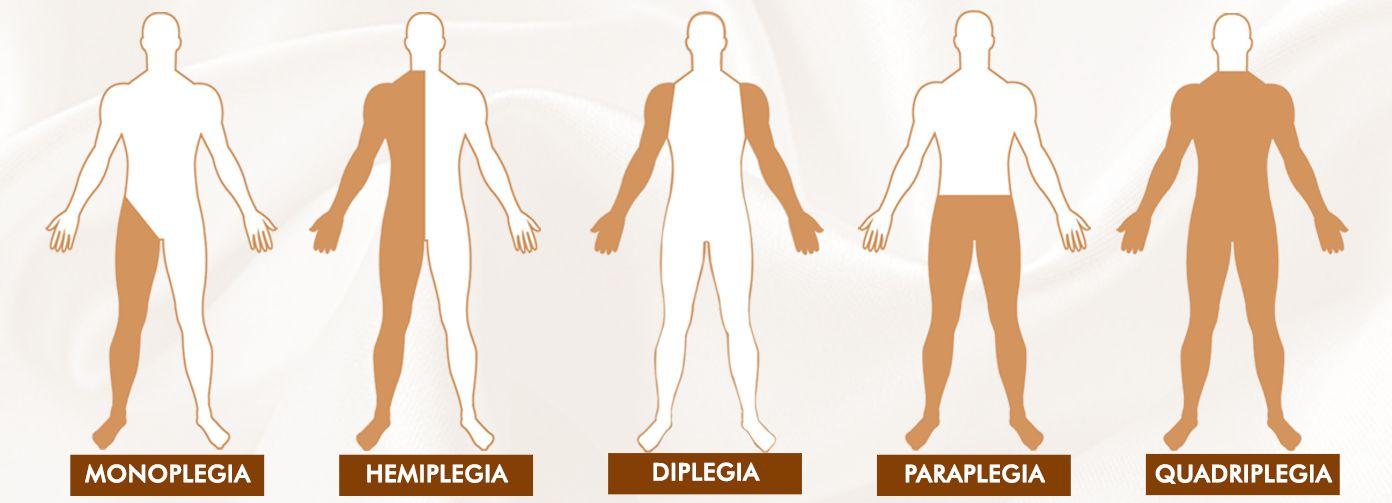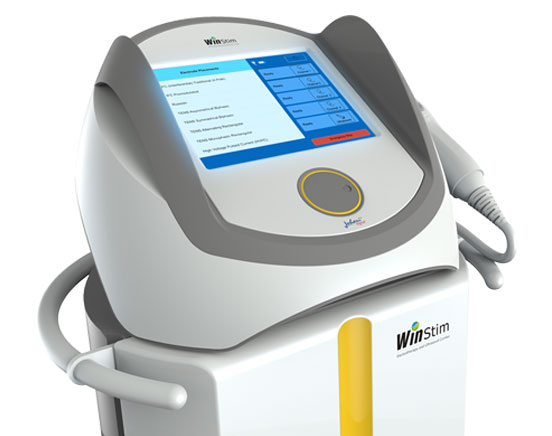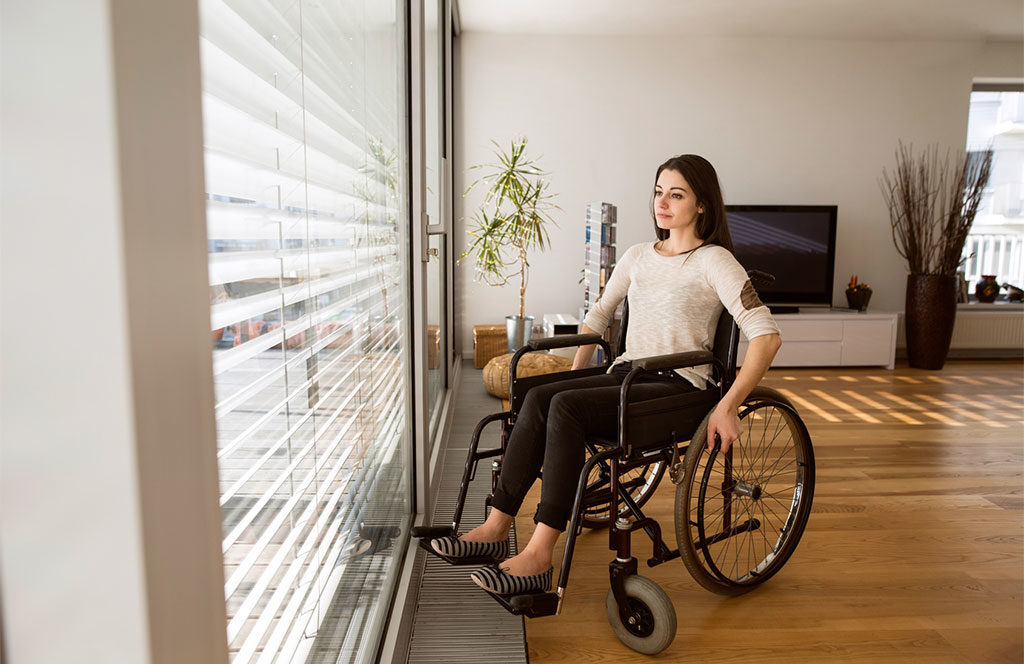Paralysis is basically loss of control over a muscle or group of muscles in a part of the body. This loss of control occurs due to loss in muscle strength. Paralysis can be gradual or sudden, partial or complete and temporary or permanent without any symptoms. Paralysis can affect any part of the body at any point of time in life. Most of the time, paralysis is not due to some muscle problems. It happens more likely due to problem somewhere in the chain of nerve cells that runs from the body part to your brain and vice versa. Therefore different paralysis treatment are necessary to understand.
BASIC SYMPTOMS
Symptoms of paralysis may differ depending upon the cause, but are often easy to spot. Sometimes one might feel a tingling or numbing sensations or muscle cramps before the paralysis sets in. Some common symptoms of paralysis are:-
A person born paralyzed due to a birth defect
Stroke or spinal cord injury
Multiple sclerosis
Muscle stiffness before paralysis attack
Gradual loss of muscle control.
COMMON TYPES
As paralysis can happen to any muscle and many body functions can be affected. Paralysis can be classified in many different types and degrees.
Here are some common types:
Monoplegia: affects one limb only, such as one arm or one leg.
Hemiplegia: affects one side of the body, like one leg & arm of the same side.
Diplegia: affects the same area on both sides of the body, like both arms.
Paraplegia: affects both legs and sometimes parts of the trunk.
Quadriplegia: affects both arms & legs; or even the entire area from neck down.

What Causes Paralysis or Stroke
In a human body, movement of the muscles is controlled by trigger signals that are relayed from the brain to muscles. The relay system comprises of brain, spinal cord and nerves. When any part of the relay is damaged, the signals to move do not transmits properly to the muscles as they and hence results in paralysis. There are many ways through which relay system can be damaged like stroke, spinal cord injury, birth defects or brain injury. People with paralysis often feel following problem:
- Problem in breathing and unstable blood flow & heart rate
- Changes in the normal function of organs and other tissues
- Skin injuries and pressure sores
- Blood clots in the legs
- Loss of bowel and bladder control
- Trouble in speaking or swallowing

How to treat Paralytic Patients with Electrotherapy
A review of more several studies found that electrotherapy may help restore function in the paralyzed patients after SCI (Spinal Cord Injury). Electrical stimulation has been studied as a means to restore movement in paralyzed limbs.
The movement improved through electrotherapy is more systemic, involving the brain and the central nervous system, which runs along the spinal cord. It involves placing electrodes on skin which then send electrical impulses from skin to the muscles. Patients are able to move muscles that were previously lost to them due to paralysis. Electrical stimulation does not feel anything on the skin of paralytic body and it never hurts.
Electrotherapy includes combination of several therapies that is often used during stroke rehabilitation as a paralysis treatment when patients struggle with post-stroke paralysis, weakness, pain or sensory issues.
Neuromuscular Electrical Stimulation (NMES)
Muscle strengthening
Motor recovery of paralyzed limbs
Restore / improve functions
Functional Electrical Stimulation (FES)
Pain Management
Stroke Rehabilitation
Prevent Atrophy
Transcutaneous Electrical Nerve Stimulation (TENS)
Works on muscle tightness
Improve stepping ability
Helps in pain management
Interferential & Russian Stimulation
Criss-cross electrodes pattern
Strengthens muscles
Higher intensity & Better results
Electrotherapy for Stroke Patients Proves to Be Powerful!
Electrical stimulation for stroke and paralytic patients offers a wide range of benefits. Electro-stimulation offers hope in improving motor skills and reducing numbness.
Here are the major stroke side effects that electrotherapy has been proven helpful:

1. Hemiplegia (Post-Stroke Paralysis)
Electrotherapy may help in improving movements into paralyzed muscles after stroke. Electrical stimulation activates the paralyzed muscles and exercises them to help rewire the brain. Ideally, electrotherapy can help stroke patients with paralysis to slowly regain movement.

2. Hemiparesis (Partial Loss of Movement)
If you struggle with extreme weakness after the stroke (not paralysis), then electrotherapy can help as paralysis treatment. By combining electrical stimulation with physical therapy exercises, one can maximize the gains.

3. Spasticity and Gait (Walking)
Interferential therapy has been shown to help reduce spasticity in stroke patients. Stroke patients that wish to improve their balance and gait can benefit from electrotherapy because it can be applied to lower extremities with the help of a professional.

4. Shoulder Subluxation and Pain
Some stroke patients struggle with a shoulder issue where the arms become dislocated from the shoulder socket. This condition is quite painful and referred to as shoulder subluxation. Electrotherapy can help in this by reducing the severity and pain. It can also help improve arm functions.
Planning to choose Electrotherapy as Paralysis Treatment?

The electrical stimulation offers promising benefits to stroke-paralysis patients such as improved mobility, improved sensation and reduced pain. The combo-therapy – WinStim is US FDA 510(k) cleared device. The electrotherapy and ultrasound therapy are always safe and effective to use. Unlike in surgical treatments, people will not experience any side effects, as these are non-invasive methods for relieving pain.
Combination of electrical stimulation with physical therapy exercise is an essentially important paralysis treatment for achieving maximum results. We hope this guide to electrotherapy helps you on the road to recovery!


Интересно!
Большое спасибо
This very good equipment and use ful
Thank you for your feedback Dr. Raghuveer. 🙂
drrameshm2@gmail.com
We will contact you soon. 🙂
Hi,
I need electrotherapy machine for Hemipeligia treatment
Hi Dr. Maan,
We will contact you shortly. 🙂
Important information.
Physical therapy uses treatments such as heat, massage, and exercise to stimulate nerves and muscles.
Hi there! I simply want to offer you a huge thumbs up for your excellent information you’ve got right here on this post.
I will be coming back to your site for more soon.
I need this please sand me comete details like a prices